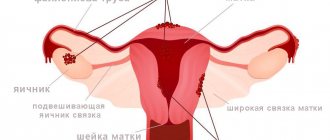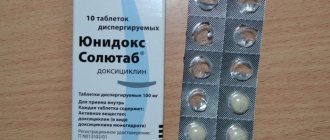Currently, modern methods of examining patients and diagnosing diseases are becoming increasingly important. Such procedures include ultrasound examination of internal organs. The procedure itself is painless, carried out quickly and is extremely informative. When prescribing some types of ultrasound, doctors ask you to bring with you, in addition to the standard diaper and towel, a condom for the ultrasound. Many patients are embarrassed by such a request, but a condom is indeed necessary to ensure their safety and protection from external infections.
How to do an ultrasound with a condom
Transrectal and transvaginal ultrasound examinations are performed using condoms.
Transvaginal
Transvaginal ultrasound examination is performed to diagnose gynecological pathologies and pregnancy. With it, the use of a special condom is mandatory, since the ultrasound is internal, the sensor is in contact with the vaginal mucosa. The method is used for:
- early diagnosis of pregnancy;
- examination of the pelvic organs (uterus, appendages);
- search for pathologies of the urinary system.
Transrectal
During transrectal ultrasound (TRUS), the patient lies on his side. It is performed through the rectum in order to search for pathologies in:
- pelvis;
- intestines and nearby tissues;
- prostate and rectum.
There are a number of contraindications for transrectal ultrasound examination:
- exacerbation of hemorrhoids;
- inability to hold feces;
- anal fissure.
How does an ultrasound condom differ from a regular condom?
There are differences between a special condom for examination and a regular condom used for contraception. Ultrasound products have advantages that make them suitable for medical use, namely:
- Hypoallergenic material . The latex from which the ultrasound condom is made is completely natural. It is suitable even for people who are allergic to regular condoms.
- Shaped to ensure perfect fit to the sensor. The condom for ultrasound examination is narrower than a standard one, so the product cannot slip. There is also no relief (sperm reservoir, pimples, folds, etc.) that could interfere with accurate signal transmission.
- Reliability . These condoms are made from especially strong latex. In addition, they are electronically tested to ensure patients receive reliable protection against infections.
- Lack of lubrication . In the case of a condom for ultrasound, lubricant is an unnecessary and undesirable component, since it can provoke an allergic reaction. Instead, a special conductive gel is used, which is applied over the condom during the procedure.
- Affordable price . A condom for ultrasound costs much less than a high-quality contraceptive product.
If the pharmacy does not have condoms for ultrasound, regular ones will do. But it is important to choose them correctly, since many condom options are unsuitable for medical examination.
Where is the best place to buy?
It is recommended to purchase a condom for ultrasound at a pharmacy. If for some reason this product is not available in your place of residence, you can purchase it through the online store. In this case, you need to use the services of only trusted sellers whose quality of goods there is no doubt about. When receiving your order, you must pay attention to the expiration date. If possible, it is better not to buy a product whose manufacturer does not inspire confidence.
Under no circumstances should you make a purchase if the product packaging is damaged.
If it is not possible to purchase a product specially designed for the examination, then in very rare cases it is permissible to use a regular condom. You must choose an option that does not contain silicone.
How is transrectal ultrasound performed?
Transrectal ultrasound is required to diagnose the condition of the prostate and rectum. It allows you to assess the condition of the prostate gland and seminal vesicles in men, determine the stage of adenoma, and identify cancerous tumors.
When examining the rectum, ultrasound helps to determine the degree of development of pathological processes in the intestine and diagnose neoplasms. Transrectal ultrasound is also used to examine women who are not sexually active. If the results of transabdominal ultrasound are not enough to make a diagnosis.
You definitely need to prepare for such a procedure. 3-4 days before the transrectal examination, you need to go on a slag-free diet to get rid of gases in the intestines, which can distort the picture on the monitor. On the eve of the ultrasound, you must take a laxative or do an enema - the intestines must be completely clean.
During such an ultrasound, a sensor with a condom on it is inserted into the rectum through the anus. The ultrasound time is traditional, 15-20 minutes. The patient may feel slight discomfort (and men often feel psychological discomfort). But such research cannot cause severe pain.
Why do you need a medical condom?
A medical condom is required for types of ultrasound that involve contact of the sensor with the patient’s mucous membranes:
- Transvaginal examination - performed for women who are sexually active and pregnant in the early stages. The sensor is inserted into the vagina. The female reproductive system is studied.
- Transrectal echography is necessary for people, regardless of gender and age, with intestinal diseases. In this way, the prostate gland and seminal vesicles of men are examined. The sensor is inserted into the rectum through the anus.
An ultrasound condom creates a barrier between the sensor and the internal environment of a person, without interfering with the passage of ultrasonic waves through the tissues of the organs being examined.
Using a medical condom solves two problems:
- Protects the patient from infection. Every body contains many bacteria, including pathogenic ones. Viruses (HIV, papillomavirus, hepatitis, herpes, etc.) are also dangerous, and anyone can be a carrier of them. The use of a medical condom eliminates the transmission of infection from one person to another through an ultrasound probe.
- Ensures the safety of equipment. Medical instruments that come into contact with mucous membranes are treated not only by chemical disinfection, but also thermally. This is unacceptable for ultrasound sensors, as it leads to their malfunction. When using a special condom, the equipment is not contaminated with human biological material.
Table: differences between a medical condom and analogues for contraception
| Characteristic | Medical condom | Condom for contraception |
| Material | High strength hypoallergenic latex |
|
| Transparency | High | Various, low for colored condoms |
| Lubrication | No | Present, but can be found without lubrication |
| Texture | None, smooth | Various or missing |
| End storage | No | Eat |
| Options |
| Various:
|
| Price (1 piece) | 5–40 rubles (depending on the manufacturer) | 30 rubles and above |
Ultrasound condoms have a discreet packaging design
Is it possible to use regular condoms for ultrasound instead of special ones?
If a medical condom is not available at the time of the transvaginal ultrasound, it is permissible to use a male contraceptive condom. It should be:
- without lubrication;
- transparent and smooth;
- the smallest diameter, since the thickness of the vaginal sensor is from 26 to 35 mm.
The rectal ultrasound probe has a diameter of 13–18 mm. Even the narrowest condom will not fit tightly on him, which means it will cause discomfort during the procedure. Therefore, a condom with a diameter of 18 mm is required for transrectal ultrasound.
The use of regular condoms during echography is acceptable, but medical condoms should not be used for contraception. One young man had a bad experience. Night on the seashore, a casual acquaintance, alcohol... The couple retired. The girl found a condom. When the time came, the guy began to put on the condom. It was difficult, but determination won out. Sexual intercourse went this way and the condom broke. Its headband cut into the penis. In semi-darkness and until the erection completely subsided, it was not possible to remove the condom. The young man hurried to the room, where he realized from the remains of latex that the contraceptive was not only small, but also there was no reservoir for the ejaculate. The subsequent vacation was ruined, the penis became swollen and red. Itching appeared. The result of unexpected intercourse with a condom for ultrasound is acute gonorrhea (a treatable disease, but unpleasant).
Transvaginal ultrasound as a method for diagnosing the female pelvic organs
Vaginal ultrasound technique is a method for diagnosing a woman’s pelvic organs, one of the most informative methods for obtaining information about gynecological pathologies and the condition of the bladder. Allows timely detection of cancer and inflammatory processes. It is carried out only for women who are sexually active. May be accompanied by a slight feeling of discomfort.
A very important method for confirming pregnancy, as well as removing suspicions of lack of fetal development (for a period of 5 weeks or more) - this is the only way to confirm the beating of his heart. At earlier dates it is not carried out for this purpose. Upon the onset of the second trimester, the same is not carried out in order to avoid miscarriage.
Preparation, conduct and contraindications
Preparation for the study is minimal: it is necessary to reduce the amount of gas contained in the intestines. For this purpose, carminative sorbents are used an hour before the test. In the case of a bladder examination, its filling is required.
A planned vaginal ultrasound is performed in accordance with the day of the cycle. As a rule, this is the beginning of the cycle, i.e. the day after the end of menstrual bleeding. The study is carried out in a lying position. The transducer (sensor) with a condom on and lubricated with gel is inserted into the vagina, not very deeply, there should be no pain.
There are no absolute contraindications for vaginal ultrasound examination. Relative are: virginity, pregnancy over 12 weeks, recent surgery in the area under study.
Purpose when performing an ultrasound procedure
To begin with, let’s figure out why condoms are needed for ultrasound.
An ultrasound condom is placed over a transducer, which is then inserted into the vagina or rectum (ie, transrectal prostate ultrasound, or transvaginal examination). This is necessary to protect the patient, because the sensor is reusable and not necessarily sterile.
Everyone comes with their own rubber product, which insures against various infections. In this way, the sensor itself is protected from viruses and bacteria so that it does not become a carrier of diseases. After all, it is used by many people and should be safe.
Differences between regular condoms and ultrasound condoms
As was said earlier, it is theoretically possible to use ordinary condoms, which are used for contraception, for ultrasound. But in this case it would be better to buy special protective equipment, which has a number of advantages. They make them as convenient as possible for carrying out this type of research. Of course, there is a significant difference between regular condoms and ultrasound condoms. Firstly , special condoms for ultrasound examinations have a hypoallergenic composition. Basically, they are always made from natural latex. They are ideal for those people who suffer from allergies to regular condoms.
Secondly , condoms for ultrasound have a special shape, which ensures a perfect fit to the sensor. These condoms are narrower than standard ones. In addition, they do not have a relief and a reservoir for sperm, or special pimples. During research, such condoms will not slip off the sensor and will not wrinkle in the folds. All this will not interfere with the normal passage of the signal.
In addition, special condoms for ultrasound are more reliable. They are made of latex, which guarantees protection against any infections. These condoms also lack lubricant. We all know that this is an essential component of every regular condom. Very often, this lubricant can cause various allergies. And when performing an ultrasound, a special hypoallergenic gel is used. It is applied on top of the condom before the procedure. What other advantages do condoms have for ultrasound? They usually have a low price. Such condoms are cheaper than any high-quality contraceptives.
Of course, if necessary, you can replace the special condom for ultrasound with a simple condom. But you should remember that choosing such a product can be difficult. It is best not to take risks, because the wrong choice can cause inaccuracies in diagnosis or cause other difficulties.
Why are condoms needed for ultrasound?
The fact is that when conducting transrectal and transvaginal forms of examination, a special sensor is inserted into the body. Due to their technical characteristics, such devices cannot be sterilized in the usual way, that is, using high temperatures and aggressive chemical compounds, like other medical devices and instruments. The technological instructions for the instrument prohibit its heating above sixty degrees and exposure to liquid media. The physician does not have the ability to ensure sterility in this manner before each patient is seen. No other methods of disinfecting the contact parts of an ultrasound machine can guarantee protection for the patient from infection, therefore condoms for ultrasound are the only method to protect patients from external infections. We can say that this is a special attachment for a hardware ultrasound sensor that ensures sterility.
Rules for choosing a condom for research
When choosing a condom, it is better to opt for products specifically designed for this purpose. They are available in most modern pharmacies. Condoms for ultrasound meet all the requirements for a full examination:
- Natural latex is used in their production. It is hypoallergenic.
- Upon acceptance of a batch of products, they undergo strict control.
- They are made with the greatest possible transparency.
- No lubricants or fragrances. Since these substances can “conflict” with the ultrasound gel, cause allergies and interfere with the visualization of the object under study.
- There is no sperm reservoir, so the condom fits tightly around the sensor.
- Does not form creases.
- There are no pimples, ribs, antennae or other elements on the surface that a regular condom might have. This has a positive effect on image quality.
If it so happens that you were unable to purchase a condom for ultrasound, you can use a regular product. You need to choose the one that best satisfies the listed requirements (no lubricants, no frills that deform its surface, transparent).
Classic condom of domestic production under the t.m. "Gladiator"
Latex condoms Gladiator - domestically produced from high-quality latex, smooth in shape with silicone lubricant, with storage.
Why are condoms needed during an ultrasound examination?
What type of ultrasound requires condoms? Condoms for ultrasound (shells for ultrasound sensors) are used for intracavitary sensors, when conducting transvaginal ultrasound (curvature 10-14 mm) of the female genital organs, transrectal examination of the intestines (rectal ultrasound, rectal-vaginal ultrasound (curvature 8-10 mm), where when performing an ultrasound requires the insertion of a sensor into the examination area. It is necessary to use a condom for ultrasound, which ensures hygiene, safety and facilitates the procedure. Used in the field of obstetrics, gynecology, urology. A condom
for ultrasound (shells for ultrasound sensors) is a medical product that has a number of differences from a regular condom, for example: – the size and shape coincide with the device’s sensor; – the condom for ultrasound does not have a reservoir for seminal fluid; – does not require lubricant; – does not cause allergic reactions; – does not distort the image due to its smooth surface.
Condoms for ultrasound (female condom) are recommended for use by doctors with all types of ultrasound device sensors - since their shape and level of transparency exactly correspond to the ultrasound machine sensor, they are easy to put on the sensor, do not slip, do not form folds - thus do not cause interference into the study.
Shells for ultrasound sensors - to avoid cross-contamination, reduce the risk of patient infection, and also protect medical equipment from aggressive environments.
Condoms for ultrasound Analogues: Evisonic, COVERS transducter (Сivco), Vizit, Ultrasound Sheaths Probe Covers Latex.
Condoms for ultrasound (shells for ultrasound sensors) made in Germany
Condoms for ultrasound “AMOR” (made in Germany) are used during vaginal and rectal ultrasound examinations, ensuring safety and preventing the transfer of various infections from one patient to another. Condoms for ultrasound (Medical sheaths) AMOR are made of natural latex and have high elasticity. They are recommended for use by doctors with all types of ultrasound device sensors - since their shape (without storage) and level of transparency exactly correspond to the ultrasound device sensor, they are easily put on the sensor and fit the ultrasound sensor more tightly, do not slip, do not form folds - thus do not interfere with the study (unlike ordinary condoms, the surface of which is replete with irregularities and folds)
Medical sheaths “AMOR” (registered as medical devices) are used for ultrasonic radial scanning sensors with a diameter of 20-34 mm from any manufacturer , in particular for the brands: Olympus, Siemens, Hitachi, Louge, Shimadzu, Sonowied, Accuvix, Medison, GE , Acuson, HP, Philips, Agilent, ATL, Toshiba, and can also be used on other medical equipment of a similar size (shock wave therapy devices).
Shells for ultrasound sensors, AMOR, are available in three diameter sizes: 18, 28 , 34 mm.
Latex condoms for ultrasound meet all requirements, have registration documents and a certificate of quality confirmation. The medical sheath made of natural latex is a disposable medical device. When using a condom, avoid use in patients who are allergic to natural rubber latex.
Technical characteristics of the condom:
Condom diameter: 18, 28 , 34 mm;
Length: not less than 200 mm;
Thickness: 0.065mm;
They are lubricant and accumulator free and electronically tested.
Shelf life: 5 years
Packaging: 1. group cardboard box, with a window for removing a ready-to-use condom (closed with a transparent membrane), quantity per box - 200 pcs. 2. individual plastic packaging, in a group white cardboard box of 100 pcs, or in a plastic bag of 3600 pcs.
Directions for use: Carefully place (roll out) onto the sensor for examination, without using fat-containing lubricants.
Manufacturer: “Amor Gummiwaren Gmbh” , Germany Price of condom for ultrasound “Amor”, diameter: 28 or 34 mm, made in Germany: Price per piece: 3.00* rub. (product is temporarily not for sale) Price per package of 200 pcs.: 600.00* rub. (group packaging of ready-to-use condoms, 200 pcs. in a cardboard box with a protective membrane). Such packaging provides maximum convenience for medical personnel during mass and everyday research (diagnostic departments). Price per piece: 3.50* rub. (product is temporarily not for sale) Condom for ultrasound with diameter: 28 mm. (individual packaging of each condom, in a group cardboard package of 100 pcs. Price per package of 100 pcs.: 350.00* rub. Special offer!: Price per piece: 3.25* rub. (product is temporarily not for sale) Condom for Ultrasound diameter: 28 mm (individual packaging of each condom, in group packaging (p/p bag) of 3600 pcs. (minimum packaging: - bag of 3600 pcs.) Price per package (3600 pcs.): RUR 11,700.00* .
What condoms are needed?
Simple intimate condoms are not suitable for ultrasound. For this purpose, manufacturers produce special medical ones. Let's talk about which companies' products to choose and what indicators to focus on.
How to choose the right one: companies, manufacturers and price
To choose a special condom for ultrasound examination, you must have at least a minimal understanding of the parameters that the product must meet. The products of many manufacturers have basically similar indicators:
- product length – 180-200 mm;
- diameter – 28 mm;
- The thickness of the manufacturing material is 0.06-0.065 mm.
In the assortment of pharmacies you can most often see Malaysian-made Viva condoms, produced specifically for ultrasound, at a price of 10 rubles per piece. Russian products of the Arzi brand are cheaper - 8 rubles per piece. Condoms from the German brand Vizit, which are of high quality, are in great demand among patients, but their price is much higher - 30 rubles per unit. There are no fundamental differences between brands, so you can take any product whose price meets the patient’s needs. If the pharmacist cannot offer the option that is needed, but only the usual types of product, you should make sure that it meets the stated goals. You should find out what size it is (preferably a basic one with size S), choose a smooth structure, and check whether flavorings are used. This is important because all these factors can cause an allergic reaction during examination.
How is it different from normal
Special condoms for ultrasound differ in many qualities from the usual one used for contraception, which in everyday life is sometimes called a “condom.” They have a number of advantages that make them suitable for medical purposes.
- The material used to make the product has hypoallergenic properties. Even people with pronounced allergic reactions to simple condoms do not experience any inconvenience.
- The condom has an ideal shape that matches the shape of the sensor. Slipping during the procedure is excluded, since a medical condom is much narrower than a regular one. Its surface has a smooth texture without pimples, folds and sperm reservoir, which allows you to get undistorted, accurate results.
- To produce the product, especially durable latex is used, which provides reliable protection and eliminates surface damage.
- There is no lubricant, which, as an additional component, can cause allergies. During the study, a special conductive gel is applied to the surface of the condom. The product is coated with this lubricant and inserted into the body cavity.
- The price is significantly lower than the cost of the analogue used for contraception.
How many pieces should I bring to the ultrasound?
Products intended for ultrasound examination are sold individually. To conduct 1 ultrasound examination, one condom is enough . When purchasing, do not be afraid that it will break and you will need a backup option. This won't happen, so limit yourself to one.
Using a condom during transvaginal ultrasound (video)
Which brand of product should I choose?
Condoms for ultrasound examination are produced by both domestic and foreign medical manufacturers. Products from different brands differ in quality and price. In principle, this product is not too “demanding” in terms of quality, and therefore there is no need to pay too much attention to the brand.
The most common products are the following brands:
- The most famous are products from the Viva brand. These condoms from Malaysia meet all the requirements and cost about 9-10 rubles.
- You can also find AZRI condoms in pharmacies. They are intended for ultrasound examination and are manufactured in Russia. Price from 7-8 rubles.
- Another brand is MedUS. Such products cost around 6-8 rubles apiece.
- A more expensive option is Vizit (made in Germany). The approximate price of such products is about 30 rubles per piece.
How to choose the right condom for ultrasound?
When it comes to products intended for examination, they all have similar characteristics. As a rule, the length of such a condom is 180-200 mm, diameter - 28 mm, wall thickness - 0.06-0.065 mm.
On the shelves of domestic pharmacies you can most often find condoms for ultrasound Viva made in Malaysia. They meet all standards, the cost of one product is about 10 rubles. There is a cheaper option - AZRI condoms for ultrasound, produced in Russia. Their cost is 7-8 rubles. for 1 piece
For those who value German quality, Vizit brand condoms are produced. They are made in Germany, the price of one product is 30 rubles. You can find condoms for ultrasound and other, less common brands. There are no significant differences between them; any option that suits your price will do.
If the pharmacy only carries regular condoms, make sure they are suitable for your purposes. A condom for ultrasound should not be flavored, embossed, or too wide. If the size is indicated on the package, it is better to take S - basic.
Rating of the best ultrasound condoms
Disposable condoms for ultrasound screening are produced by various companies located abroad and in Russia. The most popular and high-quality products will be discussed below.
№1 Viva
The country producing sterile disposable condoms for ultrasound is Malaysia. The length of the products is 210 mm, and their width is 28 mm. Such condoms do not have any odor, and are also completely undetectable during the study. Before the start of serial production, Viva condoms underwent numerous tests for safety and quality, after which they were approved by WHO. Compared to their Russian counterparts, Viva condos are less common on the open market. The products have no contraindications. The cost of one product is 10 rubles. If you frequently visit the ultrasound room, you can purchase a block of disposable condoms containing 100 latex units.
No. 2 AZRI
This domestically produced option is quite popular. The length of the condoms is 190 mm and their width is 28 mm. The material for the manufacture of the protective product is durable transparent latex, which has a smooth surface and does not have a reservoir like regular condoms. By analogy with the previous company, AZRI latex condoms were approved by WHO. The main advantage of such products is their low cost. The price of one female condom for ultrasound is 10 rubles.
№3 MedUS
MedUS condoms are produced in China. The length of the products is at least 180 mm, the width is 28 mm, and the wall thickness is 0.06 mm. The cost of one condom for ultrasound is from 6 to 10 rubles.
№4 Visit
The German company visit also produces condoms for this diagnostic procedure. These products are distinguished by an increased level of safety and quality. The cost of a condom attachment for performing an ultrasound is 30 rubles.
How is an ultrasound performed using a condom?
Transvaginal
Because The sensor for transvaginal ultrasound is inserted into the vagina, then such an examination is performed only for those women who are already sexually active.
The procedure is absolutely painless, but can sometimes cause discomfort.
Before the procedure, you need to empty your bladder. For chronic constipation, it is necessary to do an enema the day before the ultrasound so that feces do not distort the picture.
The patient undresses to the waist and lies down on the couch. The doctor puts an ultrasound condom on the sensor, lubricates it with a special conductive gel and inserts the device into the vagina (not completely).
The examination takes 5-20 minutes, after which the patient is given a conclusion.
If the bladder is examined, the procedure can be performed any day. If scanning is carried out to identify gynecological diseases, then this is done in the first half of the cycle. Pelvic examinations can be performed at different times during the cycle.
During pregnancy, transvaginal ultrasound is prescribed only in the first trimester. After this period, ultrasound is performed only abdominally (through the abdominal wall).
Transrectal
Suitable for both men and women. Used to detect pathologies of the rectum and paraintestinal space.
For men, such an ultrasound is also prescribed to examine the prostate gland and seminal vesicles.
Contraindications:
— recent intestinal surgery — exacerbation of hemorrhoids — urinary incontinence — deep anal fissures
For 3-4 days you should eliminate foods that cause gas formation. The day before the procedure, do a cleansing enema. You cannot eat 12 hours before the procedure!
The patient undresses to the waist, lies on the couch on his left side, bends his knees and brings them to his stomach. The doctor puts a condom on the sensor, lubricates it with gel and inserts it into the rectum through the anus.
The procedure is completely painless, but some discomfort may be present.
The duration of the examination is 5-20 minutes. Upon completion, you will be given the results.
How to prepare for an ultrasound examination?
For which studies are condoms used for ultrasound?
Nowadays, ultrasound is practically one of the most popular diagnostic tests. Ultrasound is very informative and not expensive. With its help you can examine almost any internal organs. Of course, some studies require special sensors that are inserted deep into the rectum or vagina. If an ultrasound is performed using such sensors, you are usually asked to bring a special condom for the ultrasound.
Many pregnant women, during their first ultrasound diagnosis, are asked to bring condoms. This may be confusing for some at first. After all, it’s not easy to immediately guess why special condoms are needed for an ultrasound.
Some people are even afraid or embarrassed to ask their doctor why such condoms are needed. In practice, many people are very surprised when they hear about condoms for ultrasound . How to choose them? Where can I buy? What are they? In this article we will look at all these issues in detail.
At the moment, all doctors recommend using special condoms for ultrasound precisely as protection against diseases that can be sexually transmitted. Each person comes to treatments with their own special microflora. Various bacteria and viruses can remain on the sensor and then spread to all visitors to the ultrasound room.
That is why it is recommended to use such condoms to protect patients. After all, you can get infected from those people who have been tested before. The condom itself is placed on a special sensor in an ultrasound machine. In principle, both special and ordinary condoms can be suitable for these manipulations.
Of course, it is better to use special condoms. They are available from all manufacturers. You can buy them at any pharmacy. In addition, they are cheaper than regular ones.
Typically, condoms for ultrasound are used during the study of gynecological diseases , as well as in the early diagnosis of pregnancy , and in the study of bladder pathologies . As for the transrectal method, it is used to examine the prostate gland and seminal vesicles in men.
Requirements for condoms for ultrasound
Condoms for ultrasound are sold exclusively in pharmacies and are made specifically for the sensor. In many ways, they are similar to regular condoms intended for contraception.
Both types of products are very carefully tested using electronic equipment. They are also made of natural hypoallergenic latex. Allergies to such rubber material occur in exceptional cases. And the risks that it will manifest itself within a short time of the ultrasound procedure are minimal.
But “products No. 2” for ultrasound also have special characteristics:
- They are always only transparent.
- No lubricant is used for them, because in combination with a special ultrasound gel they can cause allergies. And also degrade image quality.
- The ultrasound product does not have a storage device – a sperm reservoir. This allows the condom to fit very tightly around the sensor and provides maximum protection for both the device and the patient.
- The rubber of such a product is always smooth, no pimples or ribbed surface. This is a condition for the highest quality images and complete diagnostics.
Condoms for ultrasound “Viva”
The Viva® ultrasound condom is specially designed for the rectovaginal sensor of an ultrasound machine and has a number of differences from a regular condom.
Viva female condoms are made of natural transparent latex, with a smooth surface: – without storage – for a tighter fit to the device’s sensor; – without lubricant – since ultrasound machines use a special conductive lubricant (gel), which is compatible with latex products.
Viva condom size : Length no less than 190 mm; Diameter – 28 mm; Wall thickness – 0.065±0.015 mm
Condoms for ultrasound “Viva” for the rectovaginal sensor of an ultrasound machine are recommended for use by doctors with all types of rectovaginal sensors of an ultrasound machine.
Packaging: Individual 1 piece
The sales package (block) contains 100 pieces for the rectovaginal sensor of the ultrasound machine.
Shelf life: 5 years
Manufacturer of Viva condoms:
“KAREX INDUSTRIES Sdn. Bhd.” , Malaysia (Trademark “Viva”)
Registration certificate FS No. 2006/1474











